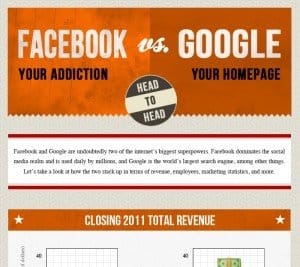 Written by ContentPowered.com
Written by ContentPowered.comIf you’re looking carefully when you browse YouTube, you may have noticed a few strange things going on with the view count on some videos. Some videos have 200, 300, 400 or more views. Some seem frozen at the enigmatic 301+. Others may have more likes and dislikes than they do views. What’s going on with YouTube and its views?
No Real Time Increases
Before diving in to the intricacies of YouTube views, one question that comes up occasionally is that of real-time view increases. Why can’t YouTube increase the view count actively?
One reason is that not every view is weighted equally. This is the driving force behind many of the other peculiarities in view counts as well. The second reason is simply due to limitations in the hardware and software that runs YouTube. With millions of users at any given time, if YouTube tried to keep track and increment view counters for every video, the processing power required would be immense. Instead, YouTube records views and updates the view counter in batches.
Why Views Stall at 301+
Sorry to say, but if your videos have under 300 views, as far as YouTube is concerned, they’re inconsequential. The reason for this is strictly monetary, a game of numbers. There are millions of videos with fewer than 300 — or even fewer than 100 — views posted to the site. That’s not to say your videos are meaningless; YouTube cares that they exist and cares about their content. However, when YouTube monetizes a video, it does it through views. A video under 300 views is unlikely to make much money, and so is left mostly alone.
Once a video hits that magical 300 mark, however, YouTube triggers a playback review. This review analyzes the views the video has received for quality. In much the same way that clicking a banner ad for your own website is detrimental, viewing your own video too many times can hinder its performance.
Quality vs. Low Quality Views
The great debate is always quality versus quantity. Video owners who care about large numbers of page views often care because they are part of a YouTube affiliate network. These networks place advertisements on the video that play before the video itself plays. These ad views pay the affiliate network and the video owner a small amount of money per view, and this is often measured in thousands of views.
More views mean more money, so unscrupulous video owners will make use of various means to bolster the view count of a video. This can be as simple as playing the video repeatedly. It might mean setting up a script to refresh the page every five or ten seconds, adding views to the video count. It might mean using a third party program to remotely view the video dozens of times through remote proxies, disguising the robotic traffic as legitimate views from around the world.
In every case, these views are created by a means other than a human watching the video and finding enjoyment of value in its content. YouTube, as part of Google, is concerned about providing quality and value to its users. Consequently, robot views are detrimental to the experience. YouTube locks the view count at 301+ and manually reviews the views each video receives. The site still tracks and records incoming views, but it audits the views a video already has and continues to get. Robot views are pruned from the total, and the new total is updated.
Why 301? What made YouTube choose this number? The number 300 came up through statistical analysis of video views. A video under 300 views is unlikely to have a robot inflating its view count, and so it is left to do as it will. This saves YouTube the trouble of analyzing every video posted to the site, which would take an incredible amount of resources.
The Problem with Embedded Videos
The viewership audit is not the only process that causes a discontinuity with video views. Another is the embed code. One of the most powerful aspects of YouTube as a video hosting service is the ability to embed a YouTube video in any other site, be it a forum post, a blog post or a home page. YouTube provides its own embed code, an easy copy and paste affair that allows even the least tech-savvy webmaster to post an embedded video. YouTube also provides an API that allows a coder to create their own video widget, to customize the look and action of an embedded video to better fit the host site.
Embedding a video in these different manners affects view counts:
- Copying the YouTube embed code as-is and embedding a video on your external website will increment views normally
- Copying the YouTube embed code and telling the video to autoplay will not increment views; this is because an autoplay video can be hidden from a user, which is a black hat SEO practice frowned upon by Google and YouTube
- Using a customized video widget often will not increment view counts. This is because YouTube has a hard time tracking customized code, and it cannot tell whether a video is being hidden in some way
Fittingly, it is much easier and more effective to use YouTube’s own embed code. Thankfully, the player is lightweight and general enough that it does not often clash with an existing website.
Why Quality Views Matter
Quality views are a matter of money and SEO. Google is on a campaign rivaling a holy war, with the power of quality content and organic value on their side. Their opponents are the black hats, the people who game the system for a quick buck for themselves and their clients. YouTube, as part of Google, maintains this emphasis in a video-centric world.
In essence, a quality video is one that draws in viewers and engages them with valuable content. These are the videos YouTube likes to see. Other videos, such as personal home videos and minimalist clips, are tolerable because they provide value for their small audience. They have no potential to go viral or bring in millions of views, but neither do they take immense resources to host.
Businesses use videos as part of SEO. They provide engaging content in video form. Some businesses are content to promote their videos through social channels. Others turn to black hat techniques to encourage ad revenue. It’s these last people that YouTube fights.
The Name of the Game
As a powerhouse on the Internet, Google has proclaimed that the future is quality. Too much of the Internet has been taken up by low-content blogs, spam videos and malicious software. People want value from the videos they watch and the websites they visit. People want to avoid wasting their time on videos that do nothing for them. People trust videos with high numbers of views to be valuable or entertaining.
It’s this trust that YouTube fosters with the view count audit and the freeze at 301+. When robots cannot bolster the view count, users can safely trust the number. Millions of users can’t be wrong, but millions of robots can lead you astray.
Update 06/11/18
YouTube has said that some views under 30 seconds may not count towards your view count. So, make sure to hook your viewers early on so that they continue to watch your video. If your video is boring at first or turns away users, you may have people leaving before they are actually counted as a view.
This means you should trim down your video intro (no more 30 second super long intros, people) and keep chit-chat to a minimum, and get right to the content that people want to see. Your view count will go up, and your viewers will be happier as a result.





I’ve found this very helpful. Does this apply to Facebook as well?
This is the best review I’ve found of the whats and whys of YouTube viewcounts. I’ve searched, read, watched videos for about 8 hours. Thank you.
Thanks for sharing your helpful research. Just one note I would like someone at YouTube read someday: “more views does not guarantee more quality, just people’s curiosity”. So their algorithm is a bit broken. Thanks again for your work.
Very interesting and helpful. Thanks.
how to boost views on youtube in less time?
Yes this is very common. It will help them deal with some of the fake view providers. Real view providers will be fine because their views are legit.